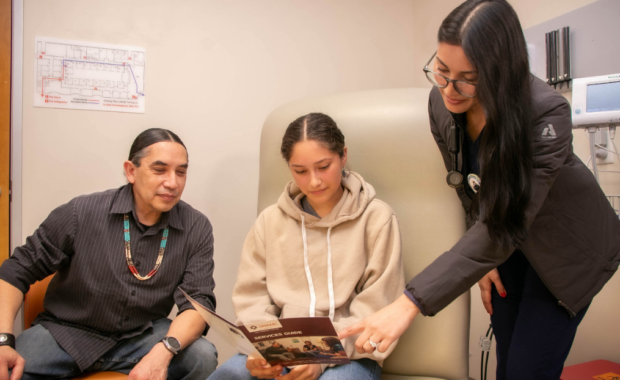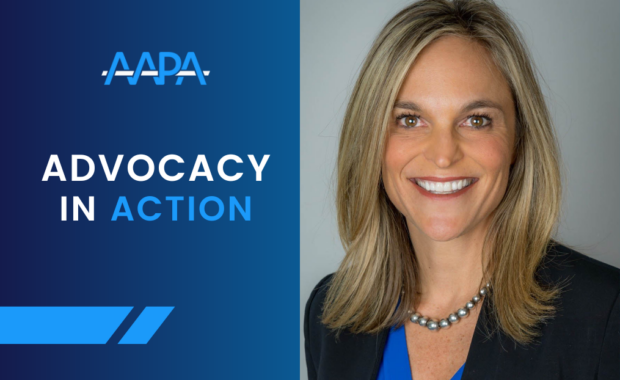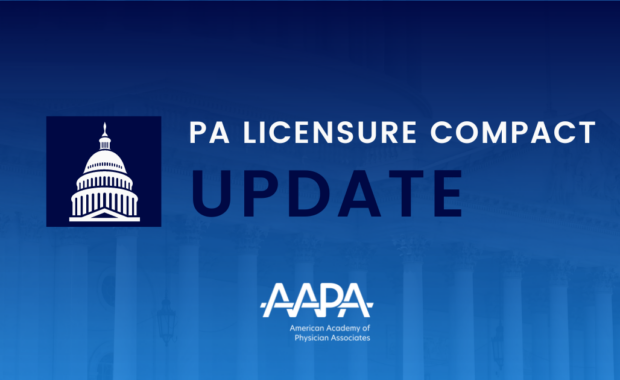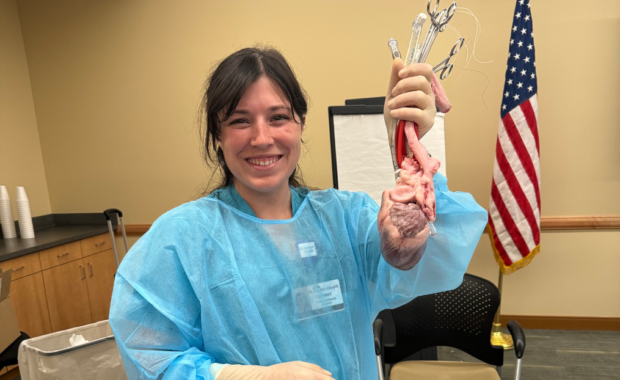Maine Hospitalist Reflects on Life-Changing Decision to Become a PA
Grace Advocates for OTP and Commitment to Healthcare Team
September 5, 2019
By Jenni Roberson
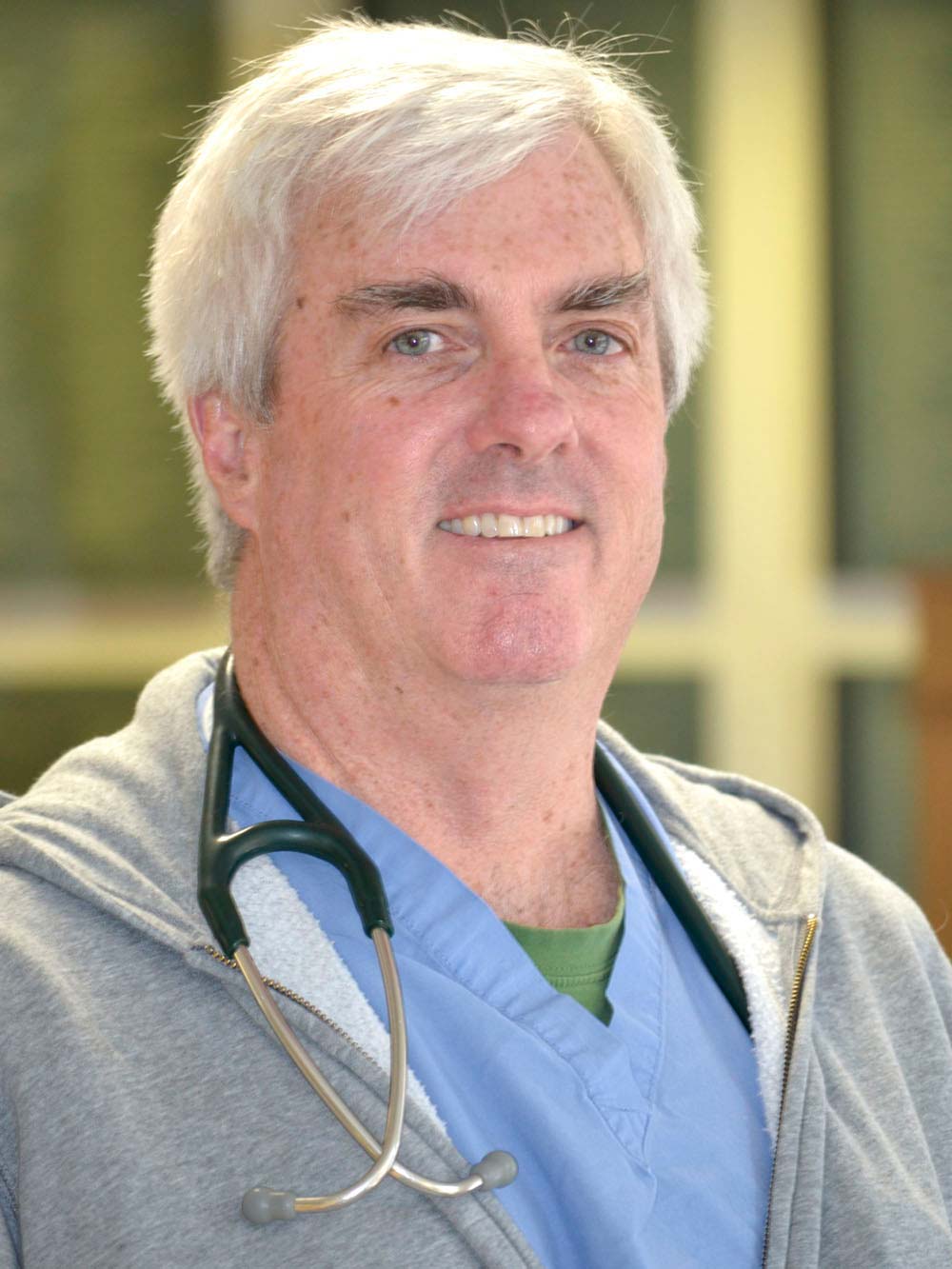
From serving in the United States Air Force for nine years to selling modular healthcare furniture, an unlikely path led Timothy M. Grace, PA-C, to become a PA.
Although it was, in fact, his job in sales that ultimately led him to medicine, his experience in the military also nudged him toward becoming a PA.
“I started talking to the people I was supposed to be selling to about their jobs, and I developed a fondness for medicine,” Grace says.
During his time in the military, Grace knew a few PAs and decided the profession would be a good fit for him. And so, he charted a new path. Grace enrolled in the PA program at the University of New England in 1999. Now, 20 years later, Grace says there are very few days when he doesn’t want to go to work.
Learn about general requirements for PA licensure
Learning from patients and science
“I’m always looking forward to going and doing my shift,” Grace says. “I learn so much not only from patients but from the science behind it. I’ve developed a fondness for the science of medicine and that grows into how you tell people what’s going on with their bodies.”
Grace, who works both as a hospitalist PA and in emergency medicine for Central Maine Medical Center in Lewiston, Maine, says the desire to help people continues to drive his passion for being a PA and has helped clarify his personal definition of career success. He also provides locums tenens work at various hospitals throughout the state.
“I have a few friends who are very successful in business. They are financially well off, but nothing is more powerful to me than being a provider and helping someone when they are at their most vulnerable,” Grace says.
“I have been fortunate to be a PA for many years and can tell many stories about exciting and phenomenal patient care where a PA has made a difference. It is never done in a vacuum.”
Mentors and team care
Grace says he has had two medical mentors in his life, and “both should be in a hall of fame of medicine.”
His first mentor, Carl Toney, was one of the first Vietnam veteran medics who went to the Duke University PA program and is one of the reasons Grace went to PA school.
“As my Program Director at UNE, he helped me to set the standard for how you treat people who need medical care, period. He made me confident that I made the right choice to become a PA,” Grace says.
The second mentor was a physician who was developing a hospitalist service and needed to bring his medical team into the fold to take on more medical care in the hospital.
“For many reasons their opinions still resonate with me today,” Grace says. “Both professionals used the word ‘team’ and both stressed paying attention to your patients to deliver the best care.”
Like so many of his fellow PAs, Grace is committed to ensuring that those in the profession advocate for modernizing PA practice laws – which is rooted in a desire to be a part of a strong healthcare team.
Support for Optimal Team Practice
AAPA’s policy called Optimal Team Practice (OTP) occurs when PAs, physicians, and other healthcare professionals work together to provide quality care without burdensome administrative constraints.
Learn more from AAPA’s PA State Laws and Regulations
To support Optimal Team Practice, states should: eliminate the legal requirement for a specific relationship between a PA, physician or any other healthcare provider in order for a PA to practice to the full extent of their education, training, and experience; create a separate majority-PA board to regulate PAs, or add PAs and physicians who work with PAs to medical or healing arts boards; and authorize PAs to be eligible for direct payment by all public and private insurers.
[Healthcare Access Stalled at Red Cliff Reservation]
Like every clinical provider, PAs are responsible for the care they provide. Nothing in the law should require or imply that a physician is responsible or liable for care provided by a PA, unless the PA is acting on the specific instructions of the physician.
“Most PAs I know have gone above and beyond to deliver the best care they can not only for the patient but also for the group of professionals we are working with,” Grace said. “OTP is about PAs becoming more recognized as a player in the healthcare systems. We’re specialized. I work alongside physicians and often times see patients with the same acuity level.”
Over the years, Grace has run into his fair share of walls that have hindered him caring for patients to the best of his training and ability. For example, laws in Maine once prevented him from giving an ultrasound test to a pregnant woman who had been in a car accident – even though he had been trained to do the test, and the physician onsite with him in the emergency department did not.
Situations such as that, which PAs in all parts of the country find themselves in, make little sense to Grace.
[Miles to Go for Quality Healthcare]
“Changing the way the rules are written doesn’t mean PAs are going to be doing things they shouldn’t be doing,” Grace said.
To Grace, advocating for OTP means standing up for patients and showcasing the abilities PAs have.
“Yes, we’re here. We’re a benefit. We do great things for a lot of people,” Grace said. “We can work side by side with physicians and other medical professionals, and it’s time to be recognized for it.”
For information on optimal team practice or how to get involved with AAPA advocacy efforts, go to Advocacy Central.
Read More
PA State Laws and Regulations, 20th Edition
PAs for Rural Health
Missouri PAs Celebrate Legislation Modernizing PA Practice
Hawaii PAs Obtain Improvements in PA State Laws
South Carolina Set to Modernize PA Practice
Thank you for reading AAPA’s News Central
You have 2 articles left this month. Create a free account to read more stories, or become a member for more access to exclusive benefits! Already have an account? Log in.
